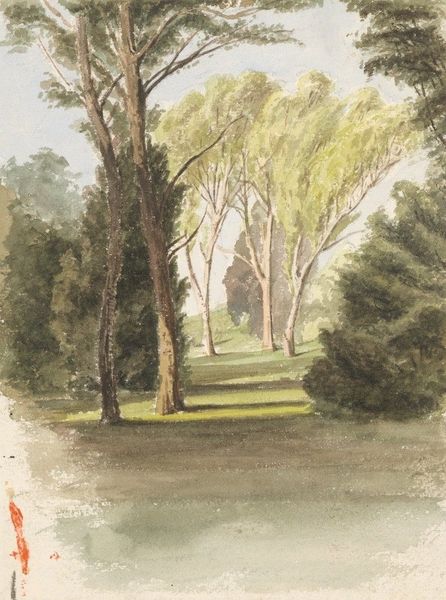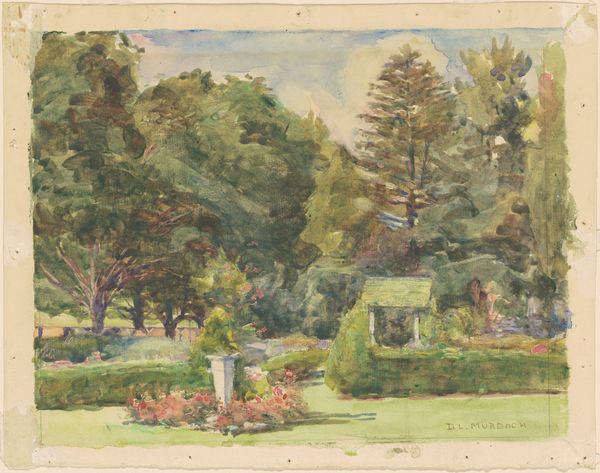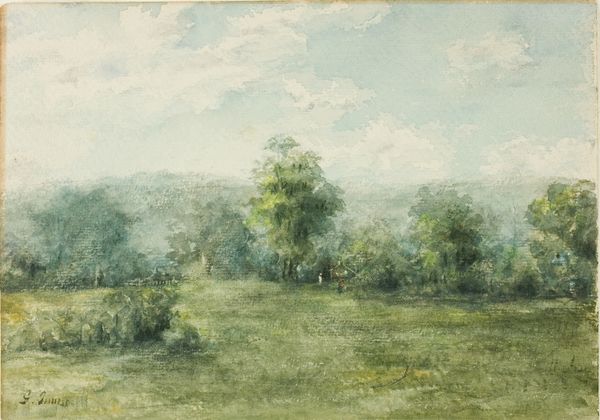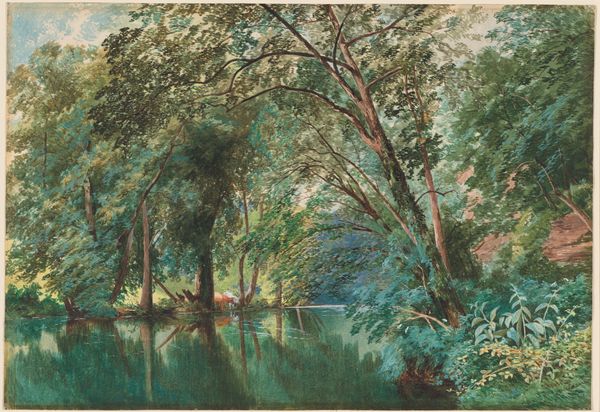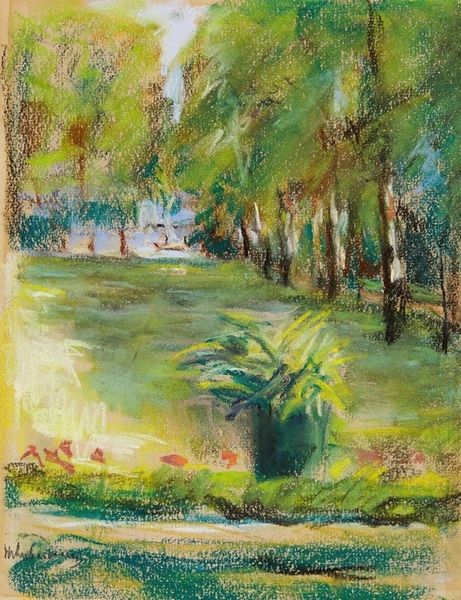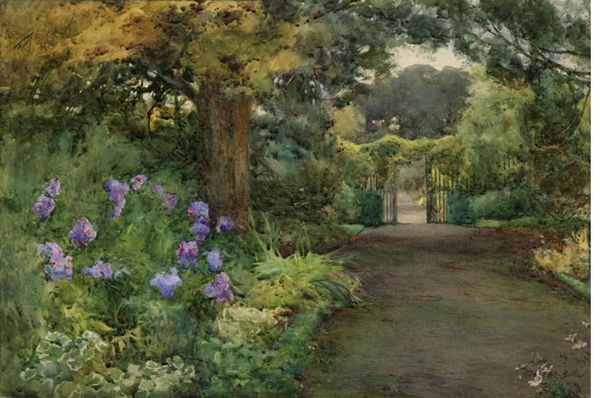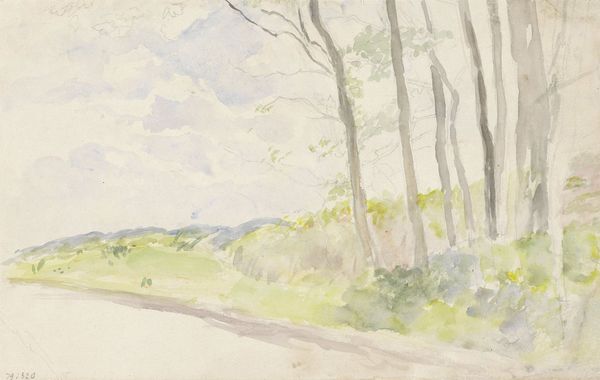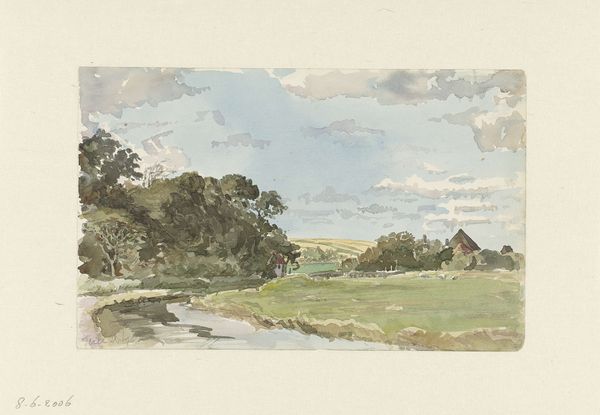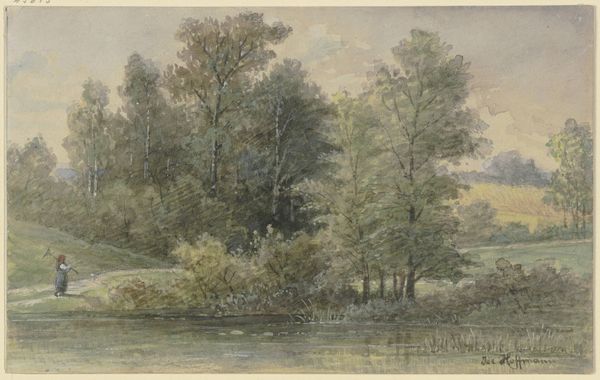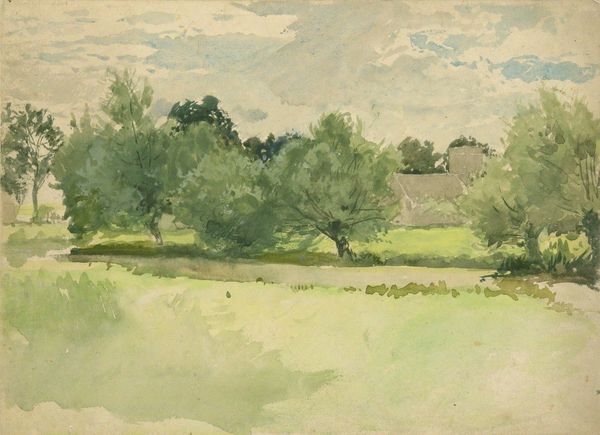
painting, plein-air, watercolor
#
painting
#
impressionism
#
plein-air
#
landscape
#
oil painting
#
watercolor
#
watercolor
Copyright: Public Domain: Artvee
Curator: Here we have "Park in Strážky" by Ladislav Mednyánszky, likely painted sometime between 1870 and 1880. It's primarily watercolor, with possibly some oil painting as well, depicting a serene landscape scene. Editor: It feels… unfinished, almost. Like a memory half-remembered. The colors are muted, the details soft. It’s a hazy, dreamy kind of place. Curator: That hazy quality speaks to Mednyánszky’s impressionistic tendencies and his interest in "plein-air" painting, capturing the fleeting effects of light and atmosphere directly from nature. He was moving away from academic rigidity. Editor: Right. The light *is* lovely. Notice how it filters through the trees, creating that sense of depth, drawing you into the composition. And the composition itself—a kind of natural proscenium arch of trees framing a glade? Curator: Precisely! It invites contemplation, doesn’t it? During this period, gardens and parks were becoming increasingly important as public spaces, offering refuge from urban life. I wonder if he’s subtly commenting on that. Editor: Maybe. Or maybe he just liked painting trees. There's something inherently democratic in that. Landscape painting opens up art, traditionally a sphere for the wealthy, to all. Like this one. Curator: I appreciate that reading. The accessibility of landscape art allowed artists to explore their own sense of place and identity. Mednyánszky, with his somewhat nomadic life, perhaps sought a sense of belonging through capturing these tranquil settings. Editor: He captures something universal, even if unintended. Looking at this now, I want to curl up in the glade, listen to the buzzing of bees and lose myself in reverie. Curator: A sentiment, I suspect, Mednyánszky himself would have appreciated. It seems that this painting succeeds as both an interpretation of an area, and a timeless sanctuary for reflection.
Comments
No comments
Be the first to comment and join the conversation on the ultimate creative platform.
